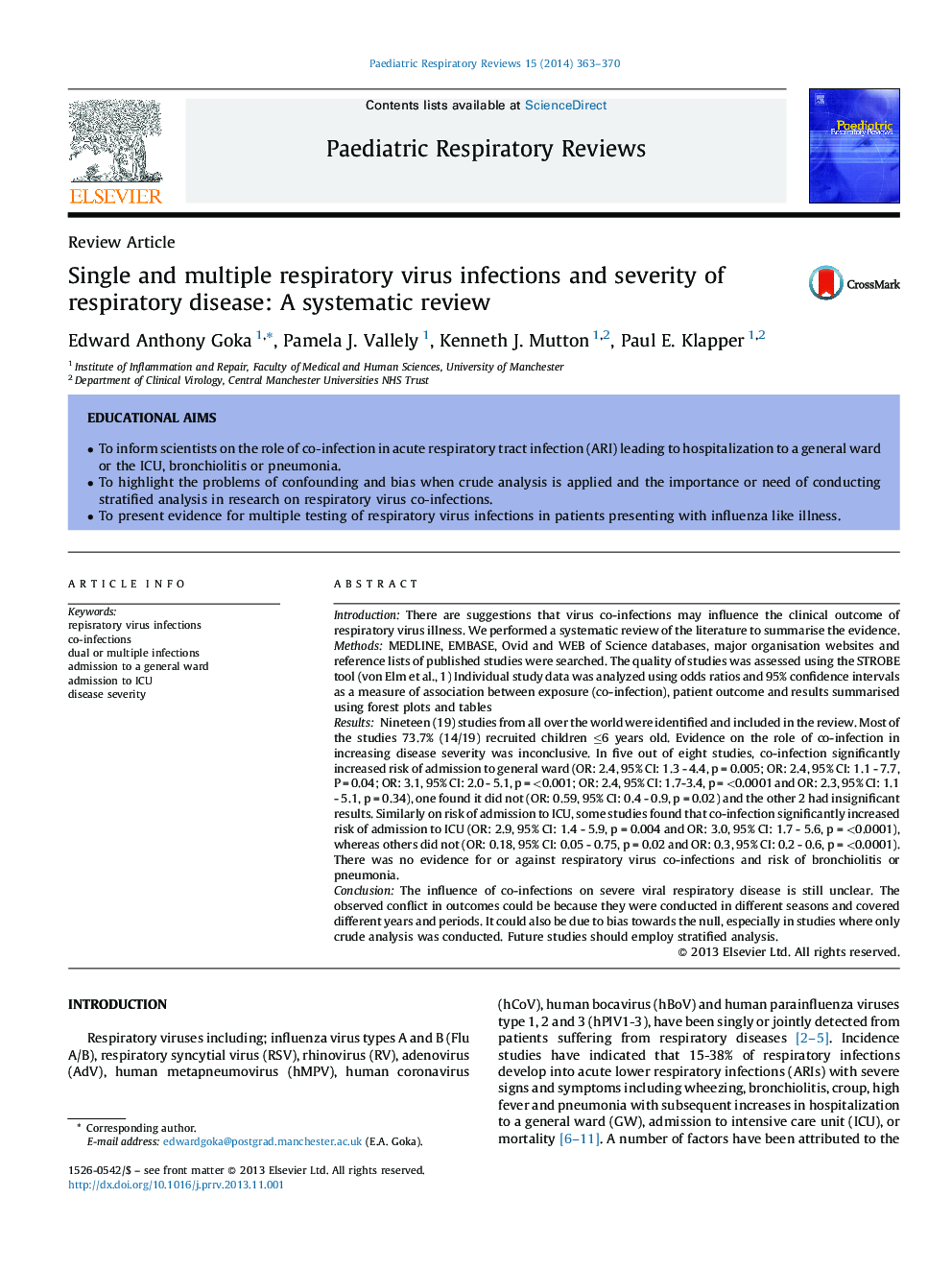| Article ID | Journal | Published Year | Pages | File Type |
|---|---|---|---|---|
| 4170883 | Paediatric Respiratory Reviews | 2014 | 8 Pages |
IntroductionThere are suggestions that virus co-infections may influence the clinical outcome of respiratory virus illness. We performed a systematic review of the literature to summarise the evidence.MethodsMEDLINE, EMBASE, Ovid and WEB of Science databases, major organisation websites and reference lists of published studies were searched. The quality of studies was assessed using the STROBE tool (von Elm et al., 1) Individual study data was analyzed using odds ratios and 95% confidence intervals as a measure of association between exposure (co-infection), patient outcome and results summarised using forest plots and tablesResultsNineteen (19) studies from all over the world were identified and included in the review. Most of the studies 73.7% (14/19) recruited children ≤6 years old. Evidence on the role of co-infection in increasing disease severity was inconclusive. In five out of eight studies, co-infection significantly increased risk of admission to general ward (OR: 2.4, 95% CI: 1.3 - 4.4, p = 0.005; OR: 2.4, 95% CI: 1.1 - 7.7, P = 0.04; OR: 3.1, 95% CI: 2.0 - 5.1, p = <0.001; OR: 2.4, 95% CI: 1.7-3.4, p = <0.0001 and OR: 2.3, 95% CI: 1.1 - 5.1, p = 0.34), one found it did not (OR: 0.59, 95% CI: 0.4 - 0.9, p = 0.02) and the other 2 had insignificant results. Similarly on risk of admission to ICU, some studies found that co-infection significantly increased risk of admission to ICU (OR: 2.9, 95% CI: 1.4 - 5.9, p = 0.004 and OR: 3.0, 95% CI: 1.7 - 5.6, p = <0.0001), whereas others did not (OR: 0.18, 95% CI: 0.05 - 0.75, p = 0.02 and OR: 0.3, 95% CI: 0.2 - 0.6, p = <0.0001). There was no evidence for or against respiratory virus co-infections and risk of bronchiolitis or pneumonia.ConclusionThe influence of co-infections on severe viral respiratory disease is still unclear. The observed conflict in outcomes could be because they were conducted in different seasons and covered different years and periods. It could also be due to bias towards the null, especially in studies where only crude analysis was conducted. Future studies should employ stratified analysis.
